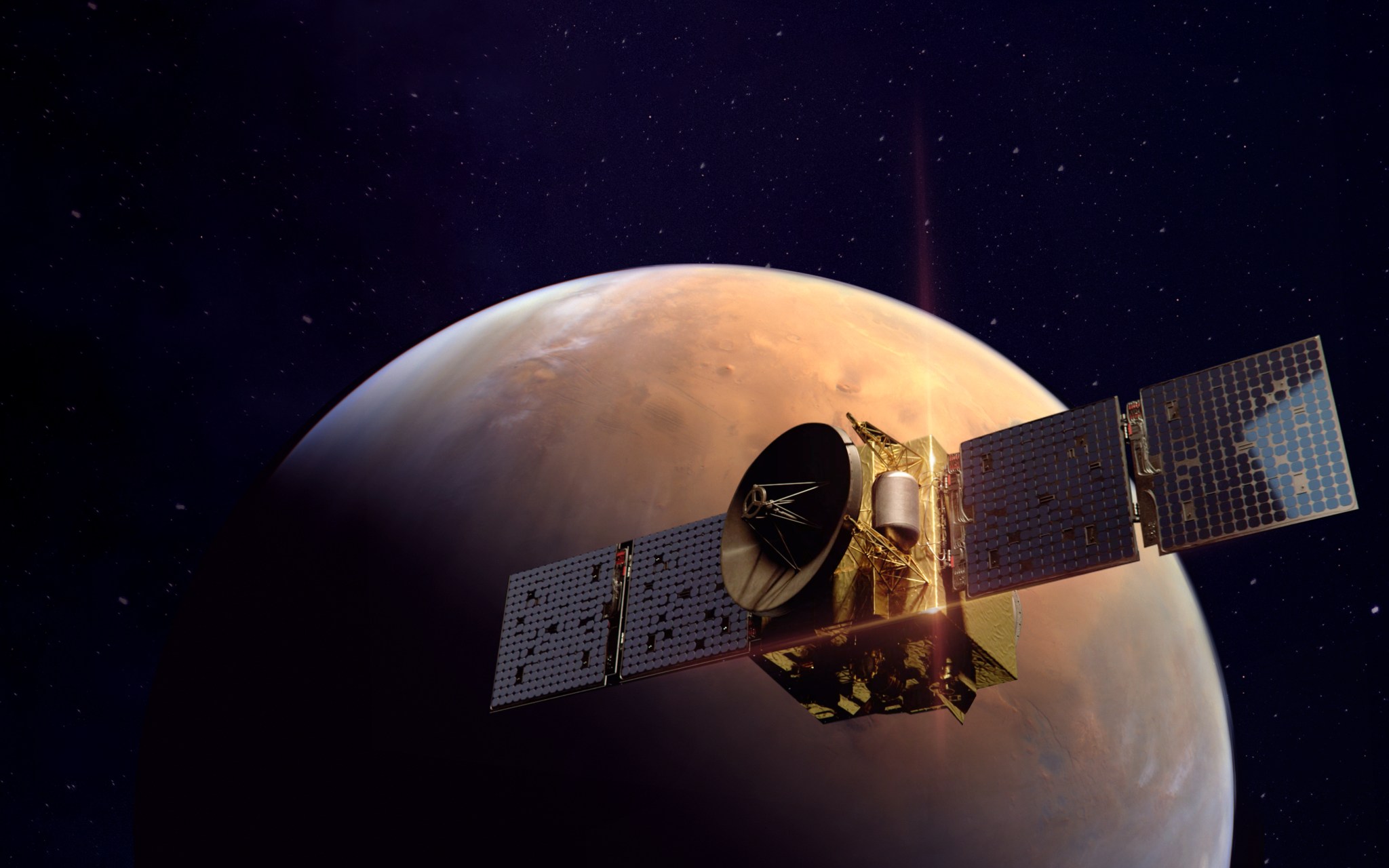NASA’s MAVEN mission and the United Arab Emirates’ Hope Probe mission are paving the way toward greater scientific collaboration and data exchange between the two Mars orbiters.
A new partnership that encourages the sharing of data between NASA’s MAVEN (Mars Atmosphere and Volatile Evolution) project and the Emirates Mars Mission’s (EMM) Hope Probe will enhance scientific returns from both spacecraft, which are currently orbiting Mars and collecting data on the Red Planet’s atmosphere. The arrangement is expected to add value to both MAVEN and EMM, as well as the scientific communities involved in analyzing the data the missions collect.

MAVEN went into orbit around Mars in 2014. Its mission is to investigate the upper atmosphere and ionosphere of Mars, offering an insight into how the planet’s climate has changed over time.
“MAVEN and EMM are each exploring different aspects of the Martian atmosphere and upper-atmosphere system,” said Shannon Curry, MAVEN principal investigator from the University of California, Berkeley. “Combined, we will have a much better understanding of the coupling between the two, and the influence of the lower atmosphere on the escape to space of gas from the upper atmosphere.”

The EMM Hope Probe, which went into Mars orbit in 2021, is studying the relationship between the upper layer and lower regions of the Martian atmosphere, giving insight into the planet’s atmosphere at different times of the day and seasons.
“Since the inception of EMM, the project has been defined by strong international collaborations and partnerships,” said Omran Sharaf, project director of EMM. “The opportunity to work alongside other Mars missions and derive greater insights by sharing our observations and working together to fit together the pieces of the puzzle is one we are delighted to take.”
MAVEN’s principal investigator is based at the University of California, Berkeley, while NASA’s Goddard Space Flight Center in Greenbelt, Maryland, manages the MAVEN project. Lockheed Martin Space built the spacecraft and is responsible for mission operations. NASA’s Jet Propulsion Laboratory in Pasadena, California, provides navigation and Deep Space Network support.
For more information on the NASA’s MAVEN mission, visit:
Nancy Jones

























